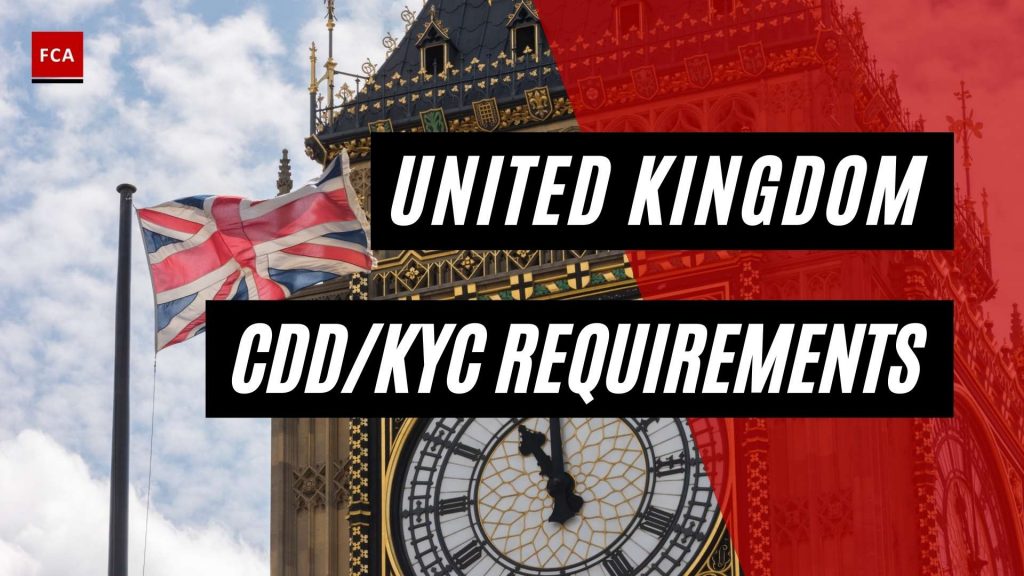The United Kingdom’s AML and CFT legal and regulatory model is divided into different parts, including primary legislation, secondary legislation, regulatory rules for supervision, and so on. This article elabrorates on ‘Important Overview Of Key Regulation And CDD and KYC Requirements In The United Kingdom in 2022’.
Primary legislation: The Proceeds of Crime Act 2002
The Proceeds of Crime Act 2002, more generally known as Proceeds of Crimes, is the legislation that criminalizes the laundering of illegal “property” and provides accompanying “regulated” offences.
It lays out the specifics of the following money laundering offences in the United Kingdom:
- The offenses of concealing, disguising, converting, transferring, or removing criminal property from the jurisdiction;
- Entering into or becoming concerned in an arrangement, knowing or suspecting that it facilitates the acquisition, retention, use, or control of criminal property by or on behalf of another person;
- The acquisition, use, or possession of the criminal property.
Penalty for failure to report
Failure to report is covered by a number of provisions, including Sections 330 for general employees and Section 331 for Nominated Officers. All people operating in the regulated industry have a responsibility to disclose any suspicions of money laundering. Failure to disclose carries a potential penalty of five years in jail and/or an infinite fine.

Tipping off
Section 333 of the PoCA addresses obstructing an inquiry or ‘tipping off,’ for example, the criminal crime of tipping off, which is currently described in section 333A of the PoCA and only pertains to the regulated sector. There are two tipping off offences in S333A of the PoCA:
S-333A(1) – disclosing a Suspicious Activity Report (SAR). It is an offense to disclose to a third person that a SAR has been made by any person to the police, HM Revenue and Customs, the National Crime Agency (NCA), or a nominated officer if that disclosure might prejudice any investigation that might be carried out as a result of the SAR. This offense can only be committed after disclosure to the NCA or a nominated officer if you know or suspect that by disclosing this information, you are likely to prejudice any investigation related to that SAR, and if the information upon which the disclosure is based came to you in the course of business in the regulated sector
It is an offense to disclose that an investigation into a money laundering offense is being contemplated or undertaken if that disclosure is likely to prejudice that investigation. The offense can only be committed if the information on which the disclosure is based came to the person in the course of business in the regulated sector.
Penalty for tipping off
It is important to understand that the offense can be committed even where you are unaware that a SAR was submitted. The penalty for the offense of “tipping off” is a maximum period of two years imprisonment and/or an unlimited fine.
The Money Laundering Regulations 2007
The 2007 Money Laundering Regulations (the 2007 Regulations), which went into force on December 15th, 2007, marked a significant shift in the United Kingdom regulatory environment. The Regulations adopted a risk-based approach with targeted additional controls and expanded CDD requirements to be used where the risks are highest, such as if the client is a PEP, in accordance with the Third EU Money Laundering Directive (3MLD).
The regulated sector
The 2007 Regulations apply to all financial and non-financial firms (designated non-financial Businesses and Persons or “DNFBPs”) engaged in relevant operations (together referred to as “the regulated sector”), with designated supervisory authorities assigned to each section of the sector.
Those businesses operating in the regulated sector were required to have in place policies and procedures to comply with the Regulations, which included:
- CDD measures and monitoring, including procedures to determine whether a customer is a PEP;
- Reporting to a nominated officer where there are knowledge, suspicion, or reasonable grounds to suspect that a person is engaged in money laundering or terrorist financing;
- Record-keeping;
- Internal control, including policies and procedures that have additional measures for products and transactions that might favor anonymity;
- Risk assessment and management;
- The monitoring and management of compliance with, and internal communication of, such policies and procedures;
- Staff awareness and training;
- Policies and procedures that provide for the identification and scrutiny of complex or unusually large transactions, unusual patterns of transactions that have no apparent economic or visible lawful purpose, and any other activity that may be related to money laundering or terrorist financing.
Failure to comply with any of the requirements of the regulations constituted an offense punishable by up to two years imprisonment (for the directors or senior managers), a fine, or both.
The Money Laundering, Terrorist Financing, and Funds Transfer (Information on the Payer) Regulations 2017 (‘MLR 2017’)
The MLR 2017 replaced the Money Laundering Regulations 2007 on June 26th, 2017.
The MLR 2017 is not a complete overhaul of the MLR 2007; rather, it is an evolution of content and a reorganization of structure that improves on and fills identified gaps in the MLR 2007, such as changing the approach to CDD, preventing new forms of terrorist financing, such as through e-money and prepaid cards, improving transparency of beneficial ownership of companies and trusts, and effective sanctions enforcement.
The United Kingdom takes a proportionate approach. The Financial Conduct Authority (FCA) has released additional instructions on how to deal with domestic PEPs.
Responsibilities of HM Treasury
HM Treasury is responsible for policy and legislation on AML and CFT systems and controls for the regulated sector, for example, financial institutions, accountants, estate agents, lawyers, high-value dealers, casinos. It is, therefore, responsible for sponsoring and issuing the United Kingdom secondary legislation. For example, the Money Laundering Regulations 2017, which is designed to implement the requirements of the FATF Recommendations and the European Union Money Laundering Directives.
Under PoCA and the Money Laundering Regulations, HM Treasury approves guidance notes produced by industry bodies in respect of the regulated sector. The body through which such guidance notes are considered and recommended for approval is the Money Laundering Advisory Committee (MLAC), which is jointly chaired by HM Treasury and the Home Office.
New regulatory system
In April 2013, the United Kingdom introduced a new “twin peaks” regulatory system for financial services in the United Kingdom. For AML/CFT regulatory requirements, the FCA replaced the previous regulator, the Financial Services Authority (FSA), and is accountable directly to both the United Kingdom Parliament and HM Treasury.
The FCA is responsible for ensuring that the relevant United Kingdom markets function well and for the conduct supervision of financial services firms. The FCA is also responsible for the prudential supervision of firms not supervised by the Prudential Regulatory Authority (PRA), the other arm of the twin peaks regulatory approach.
One of the key roles of the FCA is to regulate and supervise firms to reduce financial crime, including money laundering. The FCA has adopted the previous FSA role of devising and enforcing the rules applicable to FCA-regulated firms, including rules requiring firms to have effective systems and controls that will reduce the opportunity for financial crime.
Final Thoughts
This article elaborates on ‘Overview Of Key Regulation And CDD And KYC Requirements In The United Kingdom’. The United Kingdom’s AML and CFT legal and regulatory model is divided into different parts, including primary legislation, secondary legislation, regulatory rules for supervision, and so on.








